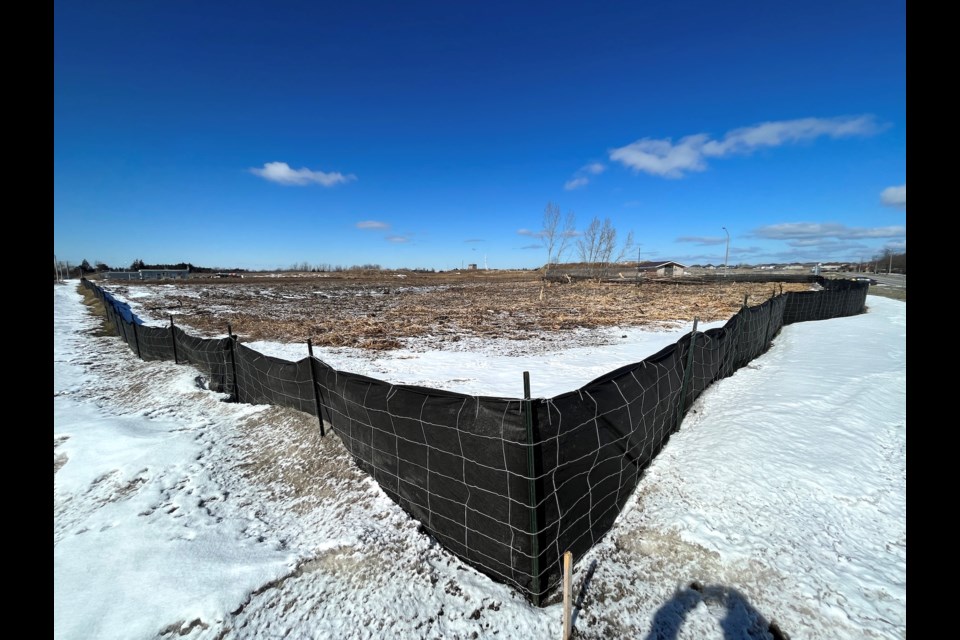What will the city do about the protected frog pond that was inexplicably bulldozed? That is the million-dollar question that concerned environmental groups are hoping to answer at next week’s city council meeting.
As first reported by ThoroldToday, a developer sent in heavy machinery last month and decimated the protected pond on the corner of Decew Road and Richmond Street.
The city says it issued the developer, DG Group—which is building a storm pond in the area—a site alteration permit to remove some dead trees, on the condition it would plant a few new ones. In the process, however, workers churned up the mud where frogs and salamanders were hibernating, squishing them to death.
The affair has left many Thorold residents angry and confused. Among those scratching their heads is Liz Benneian, the chair of Biodiversity and Climate Action Niagara, who sent a concerned letter to City Council.
“This is kind of symptomatic of a problem that has been happening around Thorold,” Benneian says, in an interview with ThoroldToday. “It’s a lack of sound natural planning and that’s the city’s fault. This frog pond was never on their natural heritage mapping. They had an obligation to make sure that land was properly protected, they didn’t do it.”
Biodiversity and Climate Action Niagara is a collective of 18 environmental groups, nature clubs and citizen-led organizations from around the region that advocates for proven municipal best practices and policies that protect and enhance local biodiversity.
In her letter to council, Benneian highlights how a 2011 survey, conducted by the Niagara Peninsula Conservation Authority (NPCA), found that Thorold only has 12.3% tree canopy cover left, when the acceptable minimum set by Environment Canada is 30%.
According to Benneian, there are many different things that can be done to improve the health of an urban forest, but it’s not as simple as planting new trees to replace the ones cut down.
“When you cut down a 150-year-old tree, you’re not going to see the benefits of a new tree, even supposing you can grow it again in that environment, for 150 years,” she says.
Even though people are quick to blame the developer for the destruction, Benneian thinks the ultimate responsibility lies with the city.
“We have to stop thinking about developers as people,” Benneian says. “Developers are corporations and their role is to make profit. They are entities, not people. We can’t blame them for doing whatever is most easiest and convenient. That’s why we need good policies, good procedures in our government to protect our natural assets.”
At Tuesday’s council meeting, Benneian and Carla Carlson, who saved the pond back in the 1990s with her Friends of the Forest group, will have the floor for 10 minutes each to present their concerns regarding the pond’s destruction.
City Hall is currently conducting an internal investigation to find out why a permit for the pond's destruction was issued, but a final report isn't due until the end of March. In the meantime, city council is demanding that the developer build a new frog pond, but some wonder if that is even a viable option.
“The issue is now: what are we going to do about it?” Benneian says. “I just don’t believe that either the city staff or the contractor for the developer is able to create a proper plan. It will never be entirely fixed because we can’t bring back what was lost.”



